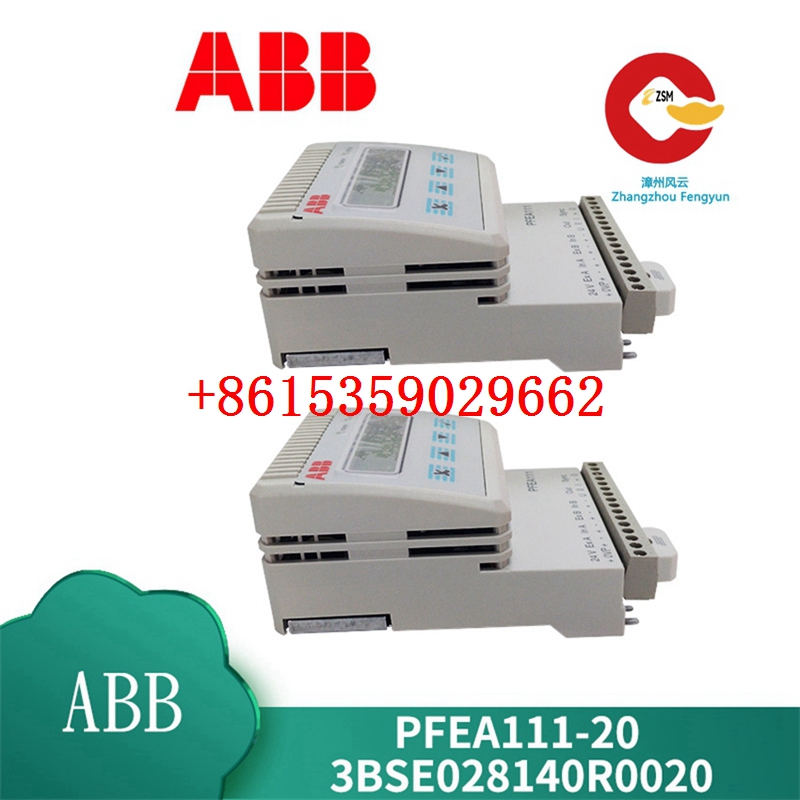Technical Parameters of ABB NSD 45 / HE368413 / HENF 105166 R2 / HE 491789 – 935

1. General Information
The ABB NSD 45 is a well – known product in the industrial electrical equipment domain, and the specific identifiers HE368413, HENF 105166 R2, and HE 491789 – 935 are related to different aspects or versions of this product. It is designed for use in various industrial applications where reliable power distribution and motor control are essential.
2. Motor Control and Power Ratings
2.1 Motor Power Capacity
- The NSD 45 is typically capable of handling motors with a power rating in the range suitable for medium – sized industrial applications. For example, it can be used to control motors with power outputs from a few kilowatts up to around 45 kW (as implied by the “45” in the model name). This makes it suitable for driving a wide range of industrial machinery, such as pumps, fans, conveyors, and compressors.
2.2 Voltage Ratings
- Input Voltage: It is designed to operate on a standard industrial input voltage range. Common input voltage options may include 380 – 480 V AC for three – phase systems, which is widely used in industrial power grids around the world. The control system and power electronics within the NSD 45 are engineered to handle these voltage levels efficiently and safely.
- Output Voltage: The output voltage to the motor is the same as the input voltage (in the case of direct – on – line starting) or can be adjusted through various control methods (such as using a variable – frequency drive integrated within or connected to the NSD 45) to match the motor’s requirements for different operating conditions.
2.3 Current Ratings
- Rated Current: The device has a specified rated current, which is the maximum continuous current it can safely supply to the motor under normal operating conditions. This rated current is determined based on the power rating of the motor and the input voltage. For example, for a 45 kW motor operating at 400 V AC, the rated current can be calculated using the formula P=3×V×I×cosφ (assuming a power factor cosφ of around 0.85). The rated current would be in the range of approximately 70 – 80 A.
- Peak Current: It can also withstand short – term peak currents, which occur during motor starting or when the motor experiences a sudden load increase. The peak current capacity is higher than the rated current and is designed to protect the motor and the NSD 45 from damage during these transient conditions.
3. Control Features
3.1 Starting Methods
- Direct – on – Line (DOL) Starting: The NSD 45 supports DOL starting, which is the simplest and most common method of starting a motor. In DOL starting, the motor is connected directly to the power supply, and it draws a high inrush current (typically 5 – 7 times the rated current) for a short period during startup. The NSD 45 is equipped with appropriate protection mechanisms to handle this inrush current.
- Soft – Starting: Some versions of the NSD 45 may offer soft – starting capabilities. Soft – starting gradually increases the voltage applied to the motor, reducing the inrush current and mechanical stress on the motor and the connected machinery. This is particularly useful for applications where a smooth startup is required, such as in conveyor systems or centrifugal pumps.
3.2 Protection Functions
- Overload Protection: It has built – in overload protection to prevent the motor from overheating due to excessive current draw. The protection is usually based on a thermal model that monitors the motor’s current and the duration of the overload condition. If an overload is detected, the NSD 45 will trip and disconnect the motor from the power supply.
- Short – Circuit Protection: The device is equipped with short – circuit protection to quickly interrupt the circuit in the event of a short – circuit fault. This helps to prevent damage to the motor, the NSD 45, and the rest of the electrical system.
- Phase Loss Protection: It can detect phase loss conditions, which can occur when one of the three phases in a three – phase system is interrupted. Phase loss can cause the motor to overheat and operate inefficiently. The NSD 45 will trip and provide an alarm signal when a phase loss is detected.
4. Communication and Integration
4.1 Communication Interfaces
- Fieldbus Integration: The NSD 45 may support various fieldbus protocols, such as Profibus, Modbus, or DeviceNet. These communication interfaces allow it to be integrated into a larger industrial automation system, enabling remote monitoring, control, and data exchange with other devices, such as PLCs, HMIs, and SCADA systems.
- Ethernet Connectivity: Some advanced versions may offer Ethernet connectivity, which provides faster data transfer rates and more flexible networking options. Ethernet connectivity allows for real – time monitoring of the motor’s status, remote parameter adjustment, and integration with enterprise – level management systems.
4.2 Input/Output (I/O) Capabilities
- Digital Inputs: It has a set of digital inputs that can be used to receive signals from external devices, such as limit switches, push – buttons, or emergency stop buttons. These inputs can be used to control the operation of the motor or to provide feedback to the NSD 45 about the system’s status.
- Digital Outputs: The NSD 45 also provides digital outputs that can be used to control external devices, such as contactors, relays, or indicators. For example, it can be used to signal the status of the motor (running, stopped, fault) to other parts of the system.
5. Mechanical and Environmental Specifications
5.1 Enclosure
- The NSD 45 is typically housed in a robust enclosure that provides protection against dust, moisture, and mechanical impact. The enclosure is rated according to international standards, such as IP (Ingress Protection) ratings. For example, it may have an IP54 or IP65 rating, which indicates its level of protection against the ingress of solid objects and water.
5.2 Operating Temperature Range
- It is designed to operate within a specified temperature range, usually from – 20°C to + 60°C (or a similar range depending on the specific version). This allows it to be used in a wide variety of industrial environments, from cold storage facilities to hot manufacturing plants.
5.3 Vibration and Shock Resistance
- The device is built to withstand a certain level of vibration and shock, which is common in industrial machinery. This ensures that it can continue to function properly even when the equipment it is controlling is subject to mechanical vibrations or sudden impacts.
In conclusion, the ABB NSD 45 / HE368413 / HENF 105166 R2 / HE 491789 – 935 is a versatile and reliable industrial motor control device that offers a range of power ratings, control features, communication options, and environmental protection to meet the demands of various industrial applications.


